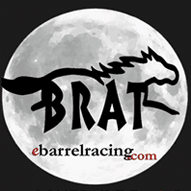FORT WORTH, TEXAS—Professional polo player Brad Limehouse of Ocala, Fla., knows how to grab the crowd’s attention every time he rides onto the field. Although he possesses extraordinary talent, it’s not his skill as a player that immediately turns heads—it’s the bold white splashes of color on his horse’s coat.
In a sport traditionally known for iconic Thoroughbreds, Limehouse’s loudly-colored American Paint Horses definitely stand out. The pro player, who is also the club manager at the Florida Horse Park Polo Club, a United States Polo Association (USPA) affiliate, is taking on a unique venture in the sport—breeding and training Paints specifically for the game.
An introduction to polo
According to the USPA, the game is played on horseback by two teams of three to four players equipped with long-handled mallets. Each team attempts to drive a small ball downfield and through the opponents’ goal posts. Possibly the oldest team sport in recorded history, polo is thought to have ancient origins. The modern game is credited to a group of British officers stationed in India in 1862, who copied tribal horsemen playing a form of polo.
Limehouse, who has played the game since he was 11, is one of a select group that carries on this tradition in the ranks of professional polo. During his career, the talented player has earned the respect of many industry leaders, including USPA Executive Director Peter Rizzo.
“Brad is an excellent player who has traveled around the country playing professional polo, and he is a fine horseman,†said Rizzo.
According to Rizzo, the four-goal player is one of the top polo players in the organization.
“Players are ranked from minus two to 10, with 10 being the highest,†said Rizzo. “Eighty-five percent of the registered players in the USPA are two goals or less, so that puts Brad in the upper 10 to 15 percent.â€
Rizzo added that rankings are reviewed twice a year by a national committee which considers factors such as a player’s ability, number of wins and losses, and the quality of a rider’s mounts.
Polo ponies
The first priority for riders is to find quality mounts that will improve their rating. Without top horses, a rider cannot hope to maximize his or her potential.
“There are no specific breeds used at any level of the sport,†said Rizzo. “A good horse is a good horse, however, the majority of mounts in the upper levels of competition are Thoroughbred, with some Quarter Horse or Argentine Criollo bloodlines mixed in.â€
According to Rizzo, Limehouse is definitely in the minority with his Paint Horses, which the player began competing on as an experiment suggested by his wife, Dawn. Both he and Dawn were long-time admirers of the versatile breed and were curious about its suitability to the game.
The couple’s search for their first Paint led them to Texas, where in 1999 they found Treasured Lightnin, a tobiano gelding that they felt had the qualities needed for the sport. Nicknamed “Royse,†the 2-year-old prospect was sired by Sun Dee Bar Watts and out of Miss Treasured, by top Paint racing stallion Treasured. The versatile gelding has not only made Limehouse stand out from the rest of the crowd since his polo debut, he has also carried Dawn to foxhunts and hunter paces.
A colorful future
Royse was just the beginning of Limehouse’s colorful lineup on the professional polo circuit. However, after training other Paints for the game, the competitor was having increasing trouble finding athletic, performance-bred prospects in his region. Breeding his own Paint Horses became the next step. At the time, the Limehouses’ owned a few quality Thoroughbred mares that were retiring from polo, which made producing their own colorful mounts a logical solution.
“Breeding any type horse as specific as Paint polo ponies can be quite expensive,†commented Rizzo about the venture. “Especially when you keep in mind that only about one horse in 10 can be trained for use in polo.â€
Limehouse believes his formula of crossing proven Thoroughbred polo mares with athletic Paint stallions that have racing and reining bloodlines will prove a winning combination. The resulting foals have an added benefit of being registered Paint Horses, since Thoroughbred and Paint crosses are acceptable for American Paint Horse Association registry. “Thoroughbreds tend to be on the nervous side, but Paints are much more relaxed,†said Limehouse, “which produces an athletic horse with a good attitude.
“The Paint side also gives more bone to the equation, so between that and their great work ethic, the Paints seem to be easier to train. They last longer as polo ponies because they know when to take it easy on themselves.â€
In addition to the mental and athletic capabilities Paints add to his games, Limehouse also noted that their striking color patterns always get a reaction.
“Our Paints always cause a stir,†said Limehouse. “They are generally a topic of conversation and people are very inquisitive about them.
“When people stop by the trailer before or after a game, they want to know about the Paints and where they can get one,†he added.
Limehouse may soon have a few more people in the industry asking about his striking horses when his oldest foal crop—now in training as 2-year-olds—make their debut on the polo fields. When that happens, Limehouse is ready to help introduce a new audience to the splashy American Paint Horse.
More about Paint Horses
The American Paint Horse Association (APHA) has been registering and promoting the American Paint Horse breed worldwide since 1962. Today, more than 100,00 people in 40 nations and territories are active members of the non-profit organization and more than 870, 000 horses have been registered.
Paint Horses are known for their intelligence, athletic versatility and bold coat color patterns. APHA offers competitors and recreational riders alike, a variety of opportunities to earn rewards for time spent with their American Paint Horses.
For more information on the Paint Horse breed, APHA and programs offered to breed enthusiasts visit apha.com or call (817) 834-2742.





